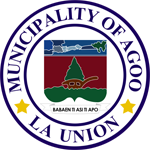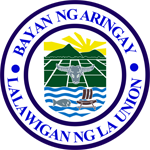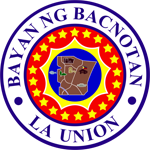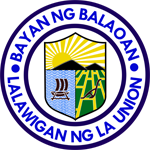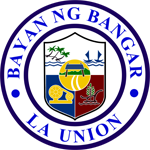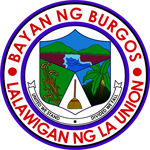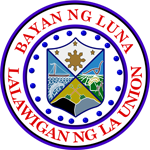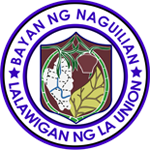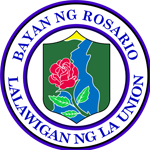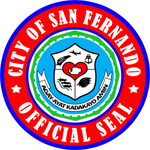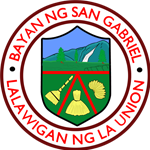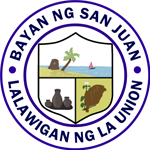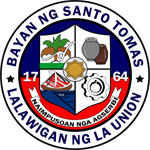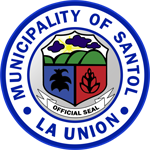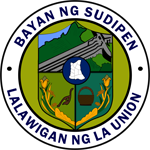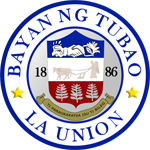

Location and Land Area
The Central Eastern Circuit is composed of the municipalities of Bauang, Bagulin, Burgos, and Naguilian. The circuit is located 10 km south of the Capital City of San Fernando and 50 km west of Baguio and 250 km north of Manila. The circuit has total land area of 35, 178. The Municipality of Bagulin holds the largest share of land area and the Municipality of Burgos has the smallest.
It is mountainous and forested area. Only the Municipality of Bauang has a coastal area along a portion of the shoreline of the West Philippine Sea.

Coastal and Water Resources
Bauang:
Beds of inland waters particularly the creeks and river has a total of 311.33hectares. The river within the terrestrial jurisdiction of the municipality is the Bauang River which intersects the northern and southern parts of the town.
The quarrying site where sand and gravel are extracted for domestic and commercial purposes is located along the Bauang River in Barangays Ballay, Acao, Bucayab and Boy-utan with an area of 56 hectares.
Coastal line is situated along the shorelines of Bauang, West Philippine Sea at the western portion of the province of La Union.
Bagulin:
Balili river is a large body of water that bisects the municipality into two (2): North and South. The river originates from Teachers camp and Burnham Park in Baguio city and flows down to La Trinidad and to the Municipality of Bagulin.
The river has severaltributaries along its way such as the Tio-angan river and other tributary creeks from the municipalities of La Trinidad, Tublay, Kapangan in Benguet province and Bagulin. The river also serves as the main canalof rainwater which goes down to Bagulin and to Bauang as it exits to the sea.
On the other hand, Balili river (Naguilian river) and its tributary creeks within Bagulin also serves as the fishing ground for farmers in the municipality. Eel, bunog, tibek, shrimp, tilapia, and carp are fish species caught in this river and in tributary creeks.
Burgos:
The three prominent rivers are the Wallayan River, Sulbuan River, and the Ribsuan – Bayating River which occupies about one tenth (1/10) of the total area of the Municipality inter-phased between the lowland, mountainous and the rolling terrain areas.
Naguilian:
Two main tributaries meander at the heart of the municipality and empty at the mouth of the river at Bauang. One is the Naguilian River which comes from La Trinidad, Benguet, passing through the Municipality of Bagulin. It is classified as Class C water based on its existing use. Water of this class are suited for propagation of fish and other aquatic life. Some portions though are of Class A, which is suitable for drinking after treatment.
There are two main irrigation systems existing and operational in the municipality. One is the Naguilian Communal Irrigation System which is the source of water for agricultural purposes for Barangays Lioac Norte, Lioac Sur, Baraoas Norte, Baraoas Sur and portions of Gusing Norte, Gusing Sur, Imelda, Ortiz, Natividad and Bariquir. It covers an area of 391.9 hectares benefiting 280 farmers. The other is the Burgos Communal Irrigation Project which services nine (9) barangays namely Ribsuan, Aguioas, Al-alinao Norte, Sili, Guesset, Angin, Bato, Nagsidorisan, and Ambaracao Norte.

Climate and Weather
The climatological condition of the circuit falls under the first climatic type of the Corona Climate Classification, characterized by two distinct seasons, wet and dry.
The other circuits generally share the same climatological condition as such.

Natural Hazards
Bauang
The Municipality of Bauang is composed of thirty-nine (39) barangays with three (3) barangays classified as urban. These are barangays Central East, Central West, and Quinavite. These urban barangays are prone to landslides and floods. However, in the event that tsunami and storm surge occur, Barangay Central West may still be affected by tsunami and storm surge inundation.
Out of thirty-six (36) rural barangays, 14 are exposed to 3 different types of hazards present in the locality. These hazards are flooding, tsunami and storm surge.
Bagulin
Flood occurs only in the Poblacion wherein households were constructed within the historical riverways along the Naguilian river bank. Also, House Construction was not regulated.
Landslide usually occurs along the Naguilian river and tributary creeks wherein its slope is more than 18% and soil formation is loose. These also happen in areas or mountains where slopesare more than 18% and where the soil is loose. The same was observed along roadsides with undulating slopes.
Burgos
Flood: The Municipality is not a flood prone Municipality although on the report of the MGB Assessment, the following areas are susceptible to flooding:portions of Barangays Caoayan, Dalacdac, Old Poblacion, and Delles - barangays traversed by the Ribsuan river. Although there is no flooding reported, flashflood occurs in these areas during rainy season.
Landslides and Erosions: Since Burgos is located in a mountainous area, most of the Barangays in the Municipality experience moderate erosions and landslides. These erosions and landslides are concentrated in the mountainous and hilly portions of the municipality with very minimal forest cover.
Two thousand four hundred fifty (2,450.00) hectares of land equivalent to 80% of the total area of the Municipality are subject to severe erosion hence, categorized as protected land area. Since 45% of the area is the clay type the internal drainage is good but the external drainage is excessive. In the cultivated areas of the town excessive erosion is evident however, in the terrace hillside where rice is planted, erosion is minimal.
Naguilian
Flood: The Municipality of Naguilian which comprises 37 barangays is exposed to hydrometeorological hazards such as flooding, rain-induced landslide, and tension cracks triggered by strong typhoons, which bring heavy monsoon rains. On the average of nineteen (19) typhoons entering the Philippine Area of Responsibility (PAR) in a year, eight (8) or nine (9) make a landfall. Most of the typhoons making landfall affect not only the Municipality of Naguilian, but also the whole Province of La Union.
For the last three censual years, flooding is the most common hazard that affects almost all barangays with high susceptibility to flooding.
Rain-Induced Landslide: The Municipality of Naguilian and the whole province of La Union is vulnerable to rain-induced landslides which are caused by forest denudation, lack of vegetation covers in steep areas and loose soil along riverbanks and creeks.
Population that is exposed and vulnerable to rain-induced landslide comprises of twenty-three (23) barangays mostly located near mountains and creeks.
This hazard occurrence causes temporary road closures. These conditions have adverse impact on economic activity of the population as it affects the movement of the people and the transport of goods and services not only in Naguilian, but also in neighboring municipalities.

Demographics
I. Population
The total population of the circuit is 150,776. The Municipality of Bauang holds the largest share in population with 75,032.
II. Poverty Incidence
The average poverty incidence in the circuit is 18.075%, with the Municipality of Bagulin having the highest poverty incidence at 30.90%.
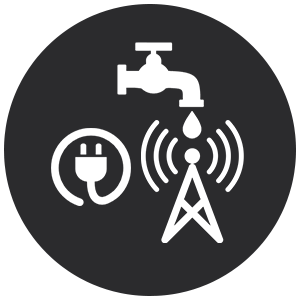
Utilities
I. Power
Bauang, Burgos and Naguilian have 100% access to electricity. 84.53% of the total household in Bagulin has access to electricity. Barangays in all the LGUs in the Circuit are generally powered by LUELCO
II. Water
Majority of the total household within the circuit has access to safe water supply.
The Naguilian Water District is the circuit’s main water provider.
III. Telecommunications
The circuit relies on a combination of postal, telephone, broadcast and print media for its communication needs and requirements. Several cell sites are located within the circuit. Internet and telephone/mobile service providers in the municipalities are Globe, Smart, Sun, and PLDT.

Commodities
All Central Circuit member LGU have the same commodities, namely Rice, Legumes, Leafy vegetables, Fruit vegetables, Root crops and fruits.

Accessibility
I. Gateways
The Municipality of Bauang serves as the Central Eastern Circuit’s Gateway that links to the Municipalities of Naguilian, Burgos and Bagulin. Access roads are the Manila North Road and the Naguilian Road from Baguio.
II. Transportation
The available transportation is through land transportation services only and are readily available with the presence of public utility vehicles such as buses, jeepneys and tricycles.
Public transportation from Manila can be through any North/Laoag-bound buses. (i.e.Partas, Farinas, Dominion, and RCJ Lines)
All tourism establishments are accessible all year round by ordinary vehicle.





